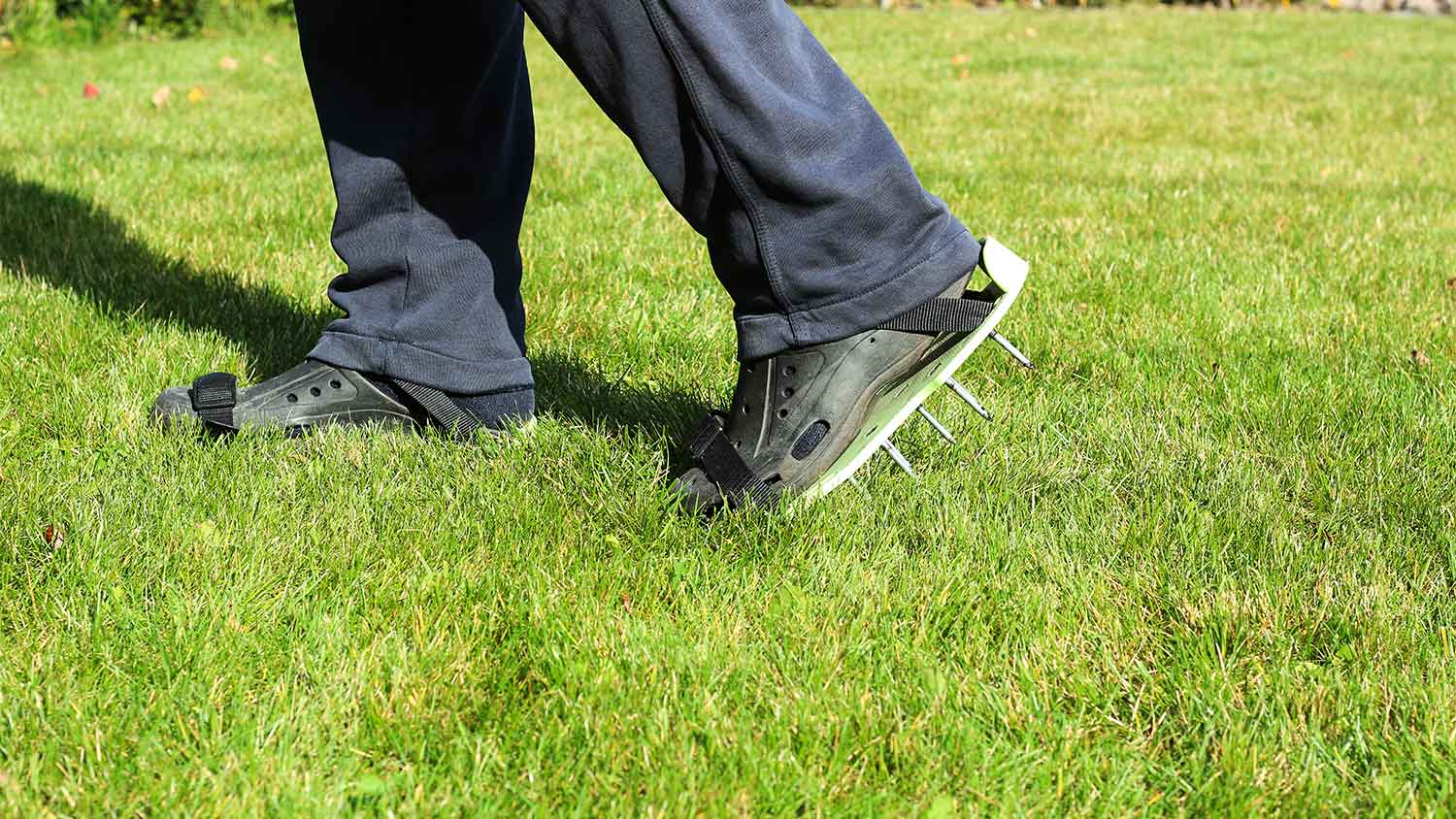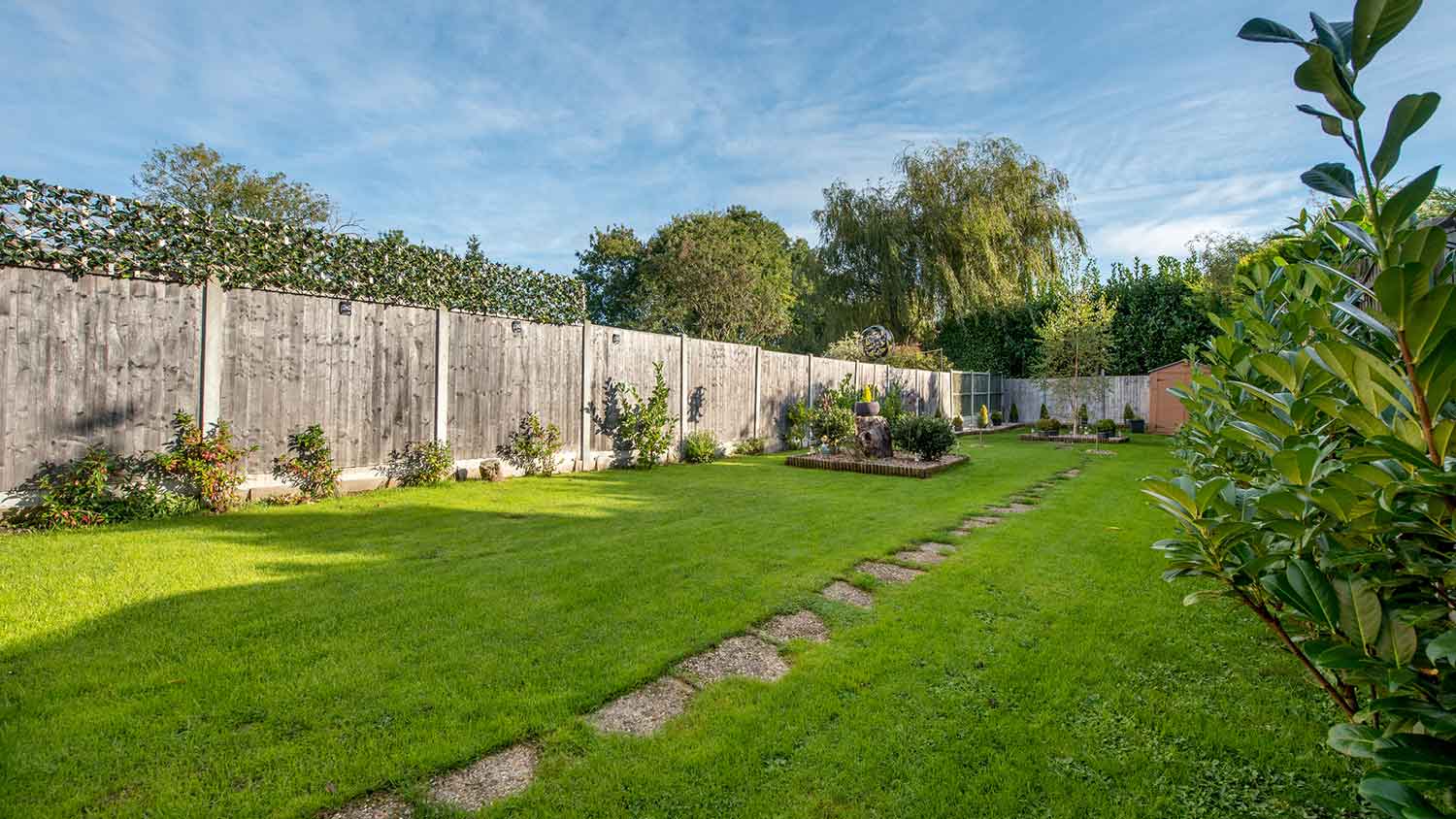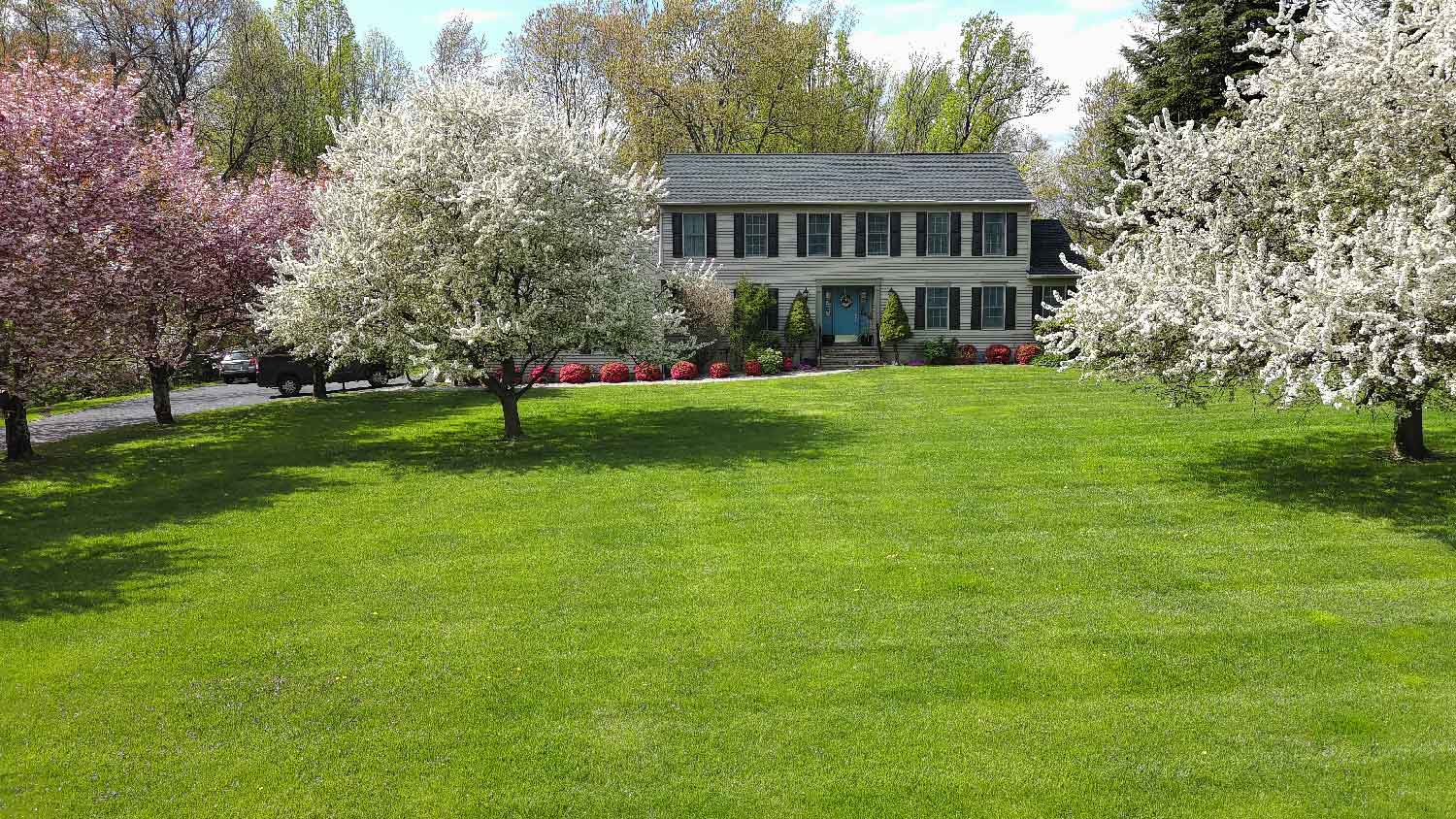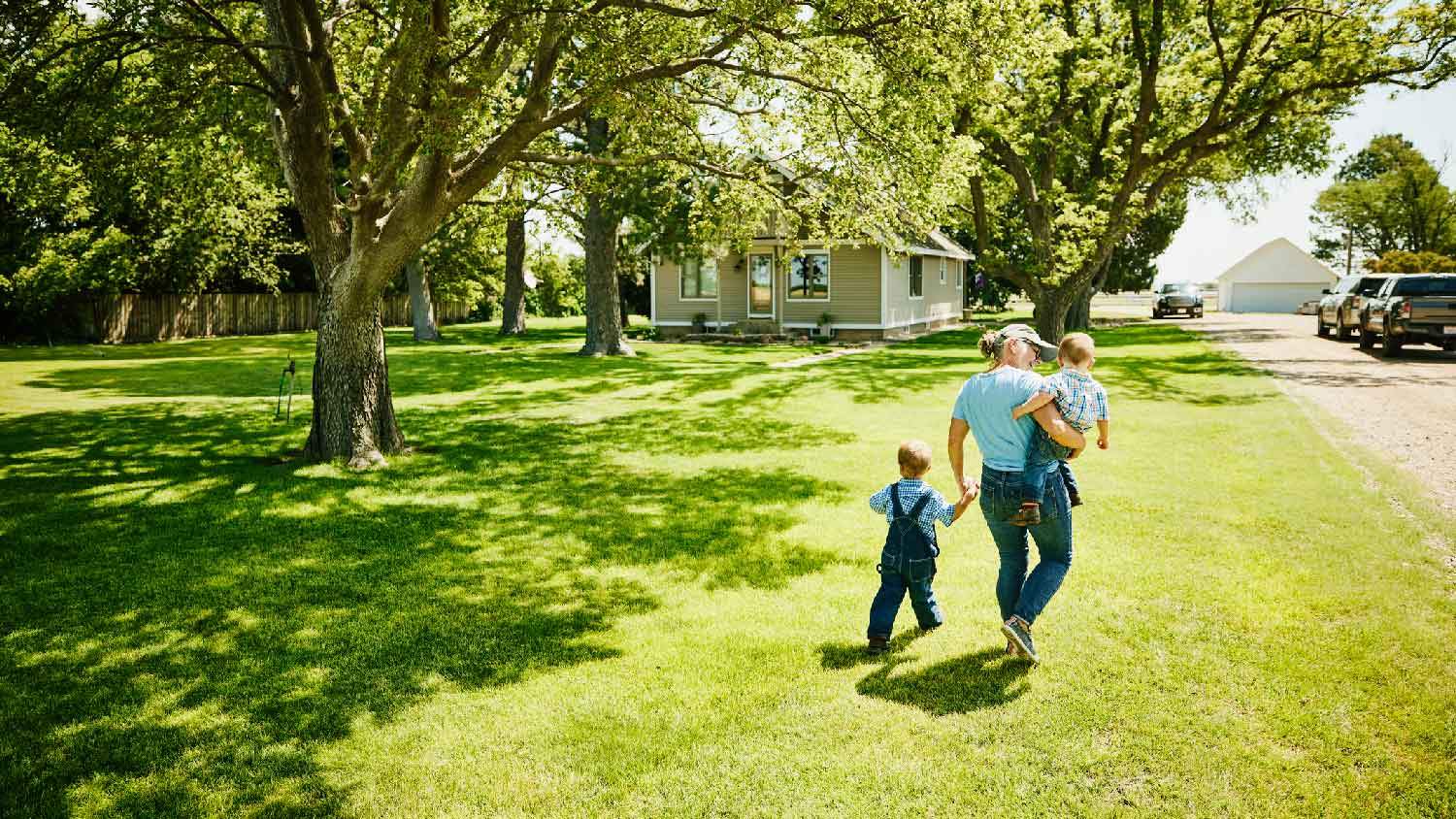7 Benefits of Aerating Your Lawn and Why You Should Add It to Your Lawn Care Regimen
Aeration can be a much-needed breath of fresh air to a stressed-out lawn


Aeration loosens compacted soil, letting in air, water, and nutrients.
This discourages disease, runoff, weeds, and pests.
Aeration leads to deeper roots, which makes your grass more resilient.
Aerate your lawn every two to three years or at signs of distress.
If you’re a homeowner who aspires to have the nicest lawn on the block, then you probably know that mowing and watering with the occasional seeding and fertilizer alone won’t cut it. You’ll need the additional benefits of aerating the lawn for it to reach its full potential. Read on to learn more about this essential part of your yard maintenance routine.
If you have dead patches in your yard, you may need to aerate those sections again to penetrate deeper. But never aerate your lawn more than two times.
What Exactly Is Lawn Aeration?
It doesn't take much to throw off the delicate balance of your lawn. Your soil can become incredibly dense after a long season of heavy rains, periods of drought, foot traffic, and countless passes with the lawnmower.
Compacted soil discourages the proper flow of everything your grass needs to grow big and strong: water, air, and nutrients. When these elements get thrown off, you end up with common lawn issues like disease, weeds, pests, pooling water, and, in time, dead grass.
Lawn aeration is the process of piercing through the top layer of soil or removing plugs of turf to expose roots and soil to the elements. Power and push aerators either send spikes into the earth or lift grass, thatch, and soil plugs out of the ground. You can even pop on aeration shoes equipped with specialized spikes for smaller yards and stomp around to aerate it.
Why Is Lawn Aeration Important?
Do you feel better when you get fresh air after a stressful day? Your grass definitely does. When you aerate your lawn, you relieve the compacted soil beneath it. A lawn that can literally breathe better can also take in more water, nutrients, and even sunlight to its root system.
Let’s dig in more deeply to the benefits of aeration for your lawn.
7 Benefits of Lawn Aeration
Sure, digging out small pieces of your lawn may not seem like the healthiest choice, but the process can improve soil health and give your lawn a fresh start. But how exactly does aeration pull this off? Let's look at the top seven benefits of aerating your lawn.
1. Regulates Thatch
Thatch is a naturally occurring layer of organic material that acts as a threshold between your grass and the soil. This layer includes a dense combination of dead grass, stems, sticks, and leaves. While microorganisms in your soil gobble up as much thatch as possible, too much buildup can close off the soil below to water, air, and nutrients.
If thatch grows higher than three-quarters of an inch, you may need to dethatch your lawn—a more extreme yet similar process to aeration.
Aeration can break up the early layer of thatch to ensure that it never overgrows large enough to require a major dethatching.
2. Loosens Compacted Soil
Compacted soil is the most common reason to aerate your lawn. Frequent lawn traffic, heavy decor or equipment, and even extreme weather like drought, rain, and snow, can lead to soil compaction.
On the most basic level, aeration allows the topsoil to mix with the nutrient-rich subsoil. An even balance of nutrients encourages roots to dig deeper and build up resilience.
3. Encourages Nutrients
In addition to the sun, air, water, and organic material, your turf gains nutrients from the layer of fertilizer you apply once or twice a year. You also likely apply weed control and pesticides to discourage invasive grasses or infestations.
None of these materials will reach the roots of your grass if the soil is too compacted to receive it. Aeration opens a channel to the grass roots for each treatment.
4. Prevents Water Buildup
Proper lawn drainage is a huge piece of the puzzle to keep your yard happy. If water doesn't absorb into the ground, it can pool on the surface, encourage lawn disease, and attract pests. Surface water can even cause runoff, bringing your soil and grass with it. If you walk on your lawn after rainfall and sink into stagnant, sponge-like puddles, aeration can help break up the soil enough to receive the water deep into its roots.
5. Lets Grass Breathe
It should come as no surprise that aeration welcomes in air as well—it's right in the name. Roots and the blades of grass above the soil rotate both oxygen and carbon dioxide. Without this exchange, you end up with thin, yellowing grass that eventually dies out. Aeration, in a sense, lets the grass breathe.
6. Deepens Grassroots
Greater access to the soil also encourages roots to reach deeper into the earth. The lower they go, the more they encounter nutrients and water, meaning you can water and fertilize them less frequently. And of course, less irrigation is better for both the planet and your wallet.
7. Strengthens Turf
When the newly extended grass roots access more water and nutrients, they become naturally more resilient against drought, rain, and freezing temperatures in the dormancy period. Grass with deeper roots also stands strong against runoff, high winds, and even compaction from traffic. And as the grass thickens and grows, there is less room for weeds to take their place.
How to Aerate Your Lawn
Now that you know the benefits of aerating your lawn, you’re likely wondering how to get started. After assessing your lawn and determining its soil and blade health, you can consider the best way to aerate your lawn. The ideal time of year to aerate is typically fall, but you should consult a lawn care professional to determine the best timing for your lawn.
There are several methods, including the following:
Spike aerators: You can spike holes in your lawn using a manual stamping device or push/pull-behind machine that works like a manual lawn mower.
Core aerators: A core aerator uses hollowed-out spikes to remove soil sections quickly. You can use a manual core aerator or a motorized core aerator.
Liquid aerators: This option uses liquid solutions that you spray onto your lawn to break down thatch areas. However, liquid aerating doesn’t work as deeply and effectively as other methods.
Manual aerating: If you only need to aerate a small area of your lawn, consider manual methods like pitchforks or aerator shoes. These options work quickly and prevent you from spending more on renting aerating equipment.
How to Get the Most Out of Lawn Aeration

We don't blame you if you're now an official superfan of aeration. But like all lawn care processes, it's important to do it correctly to access these benefits.
Here are some tips to know when and how to aerate properly in order to reap the benefits:
Aerate your lawn once every two to three years, depending on the health of your turf.
Wait for the high-growth season to aerate—this means early spring or fall for cool-season grasses or late spring and early summer for warm-season grasses.
Water your lawn the day before aerating or wait for a light rain. The lawn should be moist by not soaking.
Be sure to mark your sprinkler heads before using an aeration machine or shoes.
If you choose core aeration, let the plugs decompose naturally on your lawn.
Who to Call for Aeration Services
Depending on the size of your yard, aeration is either a doable DIY project or an easy job for your professional landscaper. A great landscaper should be able to analyze your lawn and determine if aeration is necessary at that time.
Professional aeration typically costs between $0.10 and $0.35 per square foot or a flat fee, depending on the size of your lawn. For example, a 10,000-square-foot patch of land will cost about $130 to aerate.
If you have a small lawn or a lawn with just a few problem areas, you can aerate it yourself by either renting an aeration machine for $40 to $90 a day—and typically a $150 deposit—or with handheld aeration tools. Shoe attachments and handheld aerators cost anywhere from $30 to $80 on average.
Above all, the benefits of aeration should be enough to get the process on your annual lawn checklist. And if you're working with a year-round local lawn care team, speak with them about how and when to incorporate this into your regimen.
Ginny Bartolone contributed to this article.
Frequently Asked Questions
Your lawn needs to recover after aeration, so make sure the work is done at some point during its peak growing season. This will depend on your region and the type of grass you have, but generally, aerate once or twice per year, either during the late spring, early summer, or early fall.
Yes, it’s worth aerating a lawn. Even the most diligent mowing, watering, and fertilizing schedule is not enough if the roots are not able to benefit from the care and nutrients you’re giving them. Even a lawn that’s already healthy can benefit from aeration because the more air that circulates around the roots, the stronger and healthier it will grow.
Yes, aerating your lawn will help grass grow. Pulling out soil plugs or applying liquid aeration solution allows more air to circulate around the roots. A well-aerated and hydrated root system is the foundation your lawn needs to grow green and lush. Even if your lawn is healthy, annual aeration will keep it beautiful each season.





- Do I Need to Aerate My Lawn for Healthy Grass?
- Should You Mow After Aeration? How Long to Wait and Potential Pitfalls
- 11 Must-Know Lawn Aeration Tips for the Greenest Grass on the Block
- A Yard-Lover’s Guide on How Deep to Aerate Lawns for the Lushest Grass
- How Often Should I Aerate My Lawn? How to Help Your Yard Breathe Better
- What to Do After Aerating Your Lawn: A Post-Aeration Checklist
- Who Can I Hire to Aerate My Lawn and How Much Does It Cost?
- Does Liquid Aeration Work? What to Know Before You Start
- Here’s When to Aerate Your Lawn for the Best-Looking Yard Ever
- What Is Lawn Aeration? A Complete Guide to Letting Your Lawn Breathe











